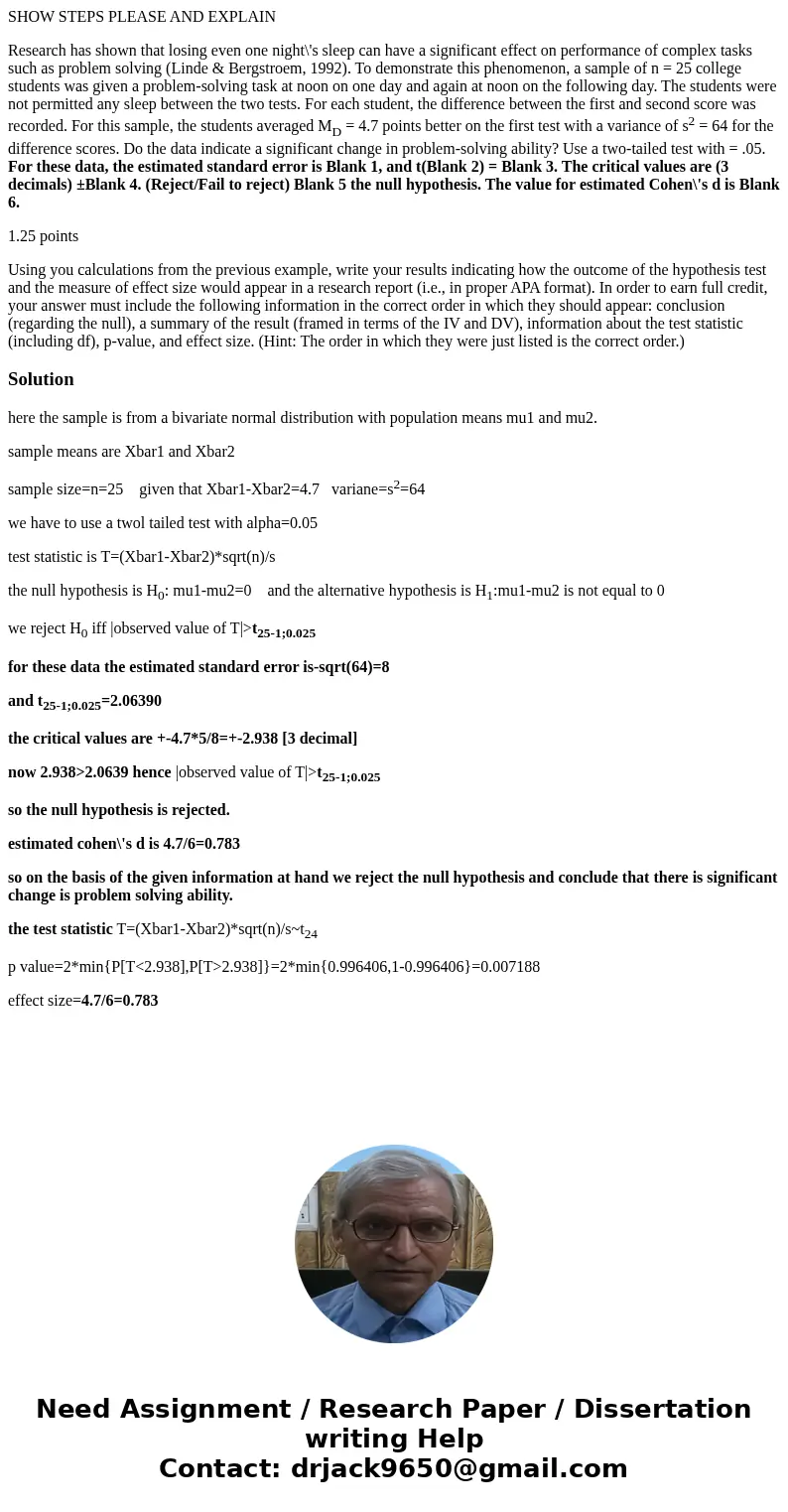SHOW STEPS PLEASE AND EXPLAIN Research has shown that losing
SHOW STEPS PLEASE AND EXPLAIN
Research has shown that losing even one night\'s sleep can have a significant effect on performance of complex tasks such as problem solving (Linde & Bergstroem, 1992). To demonstrate this phenomenon, a sample of n = 25 college students was given a problem-solving task at noon on one day and again at noon on the following day. The students were not permitted any sleep between the two tests. For each student, the difference between the first and second score was recorded. For this sample, the students averaged MD = 4.7 points better on the first test with a variance of s2 = 64 for the difference scores. Do the data indicate a significant change in problem-solving ability? Use a two-tailed test with = .05.
For these data, the estimated standard error is Blank 1, and t(Blank 2) = Blank 3. The critical values are (3 decimals) ±Blank 4. (Reject/Fail to reject) Blank 5 the null hypothesis. The value for estimated Cohen\'s d is Blank 6.
1.25 points
Using you calculations from the previous example, write your results indicating how the outcome of the hypothesis test and the measure of effect size would appear in a research report (i.e., in proper APA format). In order to earn full credit, your answer must include the following information in the correct order in which they should appear: conclusion (regarding the null), a summary of the result (framed in terms of the IV and DV), information about the test statistic (including df), p-value, and effect size. (Hint: The order in which they were just listed is the correct order.)
Solution
here the sample is from a bivariate normal distribution with population means mu1 and mu2.
sample means are Xbar1 and Xbar2
sample size=n=25 given that Xbar1-Xbar2=4.7 variane=s2=64
we have to use a twol tailed test with alpha=0.05
test statistic is T=(Xbar1-Xbar2)*sqrt(n)/s
the null hypothesis is H0: mu1-mu2=0 and the alternative hypothesis is H1:mu1-mu2 is not equal to 0
we reject H0 iff |observed value of T|>t25-1;0.025
for these data the estimated standard error is-sqrt(64)=8
and t25-1;0.025=2.06390
the critical values are +-4.7*5/8=+-2.938 [3 decimal]
now 2.938>2.0639 hence |observed value of T|>t25-1;0.025
so the null hypothesis is rejected.
estimated cohen\'s d is 4.7/6=0.783
so on the basis of the given information at hand we reject the null hypothesis and conclude that there is significant change is problem solving ability.
the test statistic T=(Xbar1-Xbar2)*sqrt(n)/s~t24
p value=2*min{P[T<2.938],P[T>2.938]}=2*min{0.996406,1-0.996406}=0.007188
effect size=4.7/6=0.783

 Homework Sourse
Homework Sourse